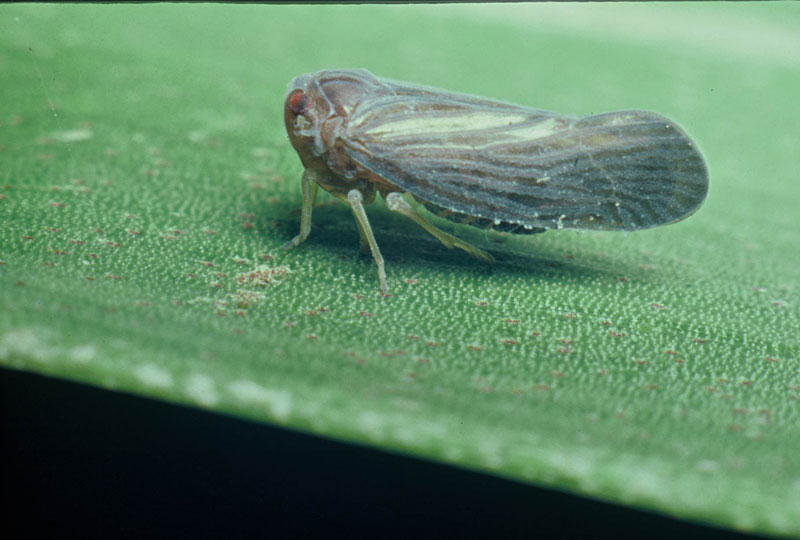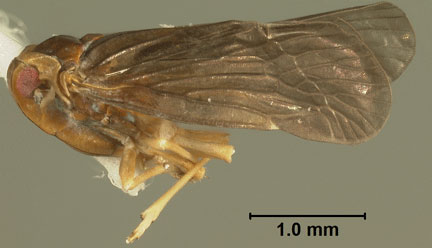Derbid Planthoppers
|
Cedusa inflata, adult; Photo by J. D. de Filippis, from Insects on Palms, used with permission by CABI Publications |
|
Cedusa sp., adult; Photo by Paul Choate, University of Florida, Dept. of Entomology and Nematology |
|
Cedusa inflata, adult with scale bar; Photo by Lyle Buss, University of Florida |
Rank & taxon
Family Derbidae (Order Hemiptera, Suborder Auchenorrhyncha, Superfamily Fulgoroidea)
Description
Short body length with long fragile wings; forewings membranous throughout; rostellum (beak) arising from back of head, terminal beak segment short; tarsitarsi:
the portion of insect legs distal to the tibia (singular tarsus)
3-jointed; antennae short and bristle-like, arising on sides of head beneath eyes and separated from front of head by vertical carinacarina:
a ridge or keel
, antennae flagellum short, bristlelike; 2nd hind tarsomere with row of spines.
Distribution
Worldwide, over 1,000 species.
Biology/life cycle
Relatively little is known about the biology of this large family of planthoppers. The larvae are often found in rotting wood debris and are thought to be fungus feeders. The adults feed on phloem sap; the host plants of many species are not known
Hosts
Hosts are not well established for this group, but adults of Derbidae have been found on a diversity of plants, including a number of palm and other monocotyledonousmonocotyledonous:
(of a flowering plant) having a single cotyledon in the seed, as in palms, grasses, and lilies
species.
Representative taxa on palms
Two species reported on palms in Florida and the Caribbean include Cedusa inflata (Ball) and Omolicna cubana (Myers). Whether these two species are true palm pests has yet to be substantiated.
Additional comments
Derbidae is included in the superfamily Fulgoroidea, which includes 20 families, all of which are considered planthoppers. Other planthopper families that have palm pest representatives include Cixiidae (American palm cixiid, Myndus crudus) and Flatidae (flatid planthopper, Ormenaria rufifascia).
Cedusa inflata and Omolicna cubana can be confused with the American palm cixiid, Myndus crudus (Cixiidae). The short apicalapical:
at the tip of a structure
segment of the rostrum is diagnostic for the two derbids.
32 North American species of Cedusa are recognized, all similar externally. Four species of Omolicna are known from the southeastern United States.





